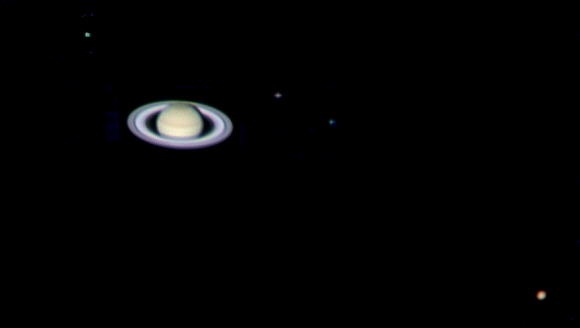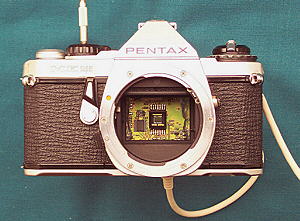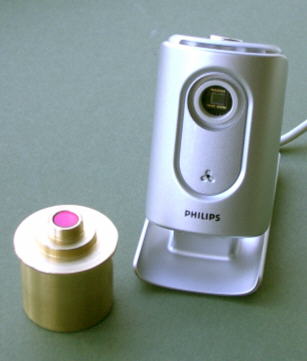Webcams
Solar System Imaging for less than $100
David Ratledge
Webcams have been around now for over 10 years and they represent a very cheap route into imaging the Moon and Planets. They have been overtaken by specialist video cameras at considerably higher cost but for casual planetary imaging they are asrelevant today as when they first hit the astronomy scene.
The secret of video and webcams is the shooting of video sequences ie thousands of images in quick succession. A wide variety of free software is available to extract just the very best images and combine them together to produce stunning results.
Not only do they take colour images, they are brilliant at the live display of the telescope image to an audience. At last several people can "look" through a telescope simultaneously.
Saturn taken with the Philips Toucam - see below

Best of the early webcams was the Philips' Toucam. However, over the years Philips updated their appearance but not their performance. They remained USB 1 devices. When it comes to maximising frame per second they have been left behind not just by the specialist video cameras (up to 60 frames per second) but also more modern webcams. The Philips are no longer available new and perhaps the new king of the castle will be the Microsoft Lifecam Cinema with a potential for 30 frames per second. I have recently acquired one of these and intend to investigate further.
I've split webcams into 3 sections:
(Lifecam is work in progress)

Mounting a Webcam in a SLR Body
Imaging with Microsoft Lifecam
